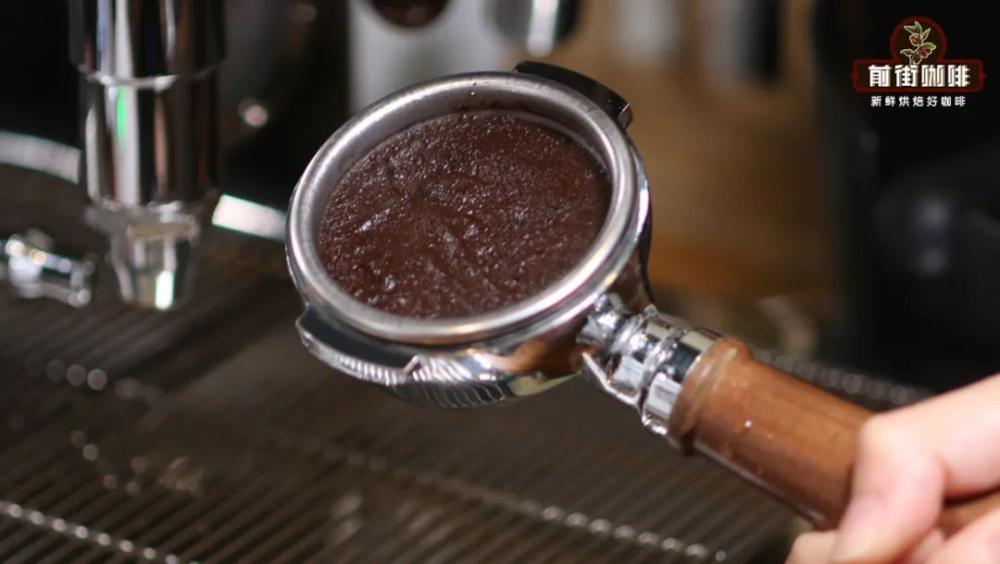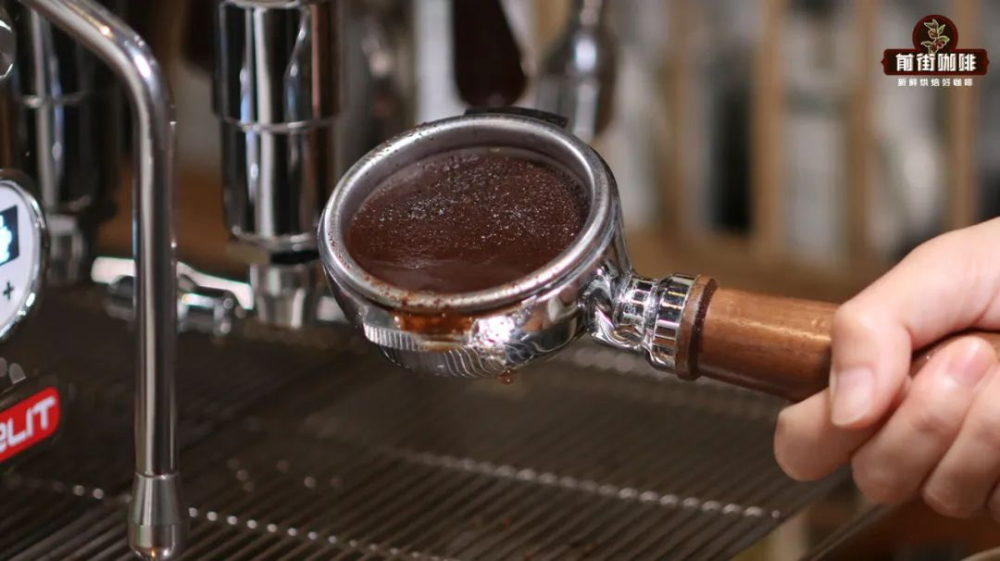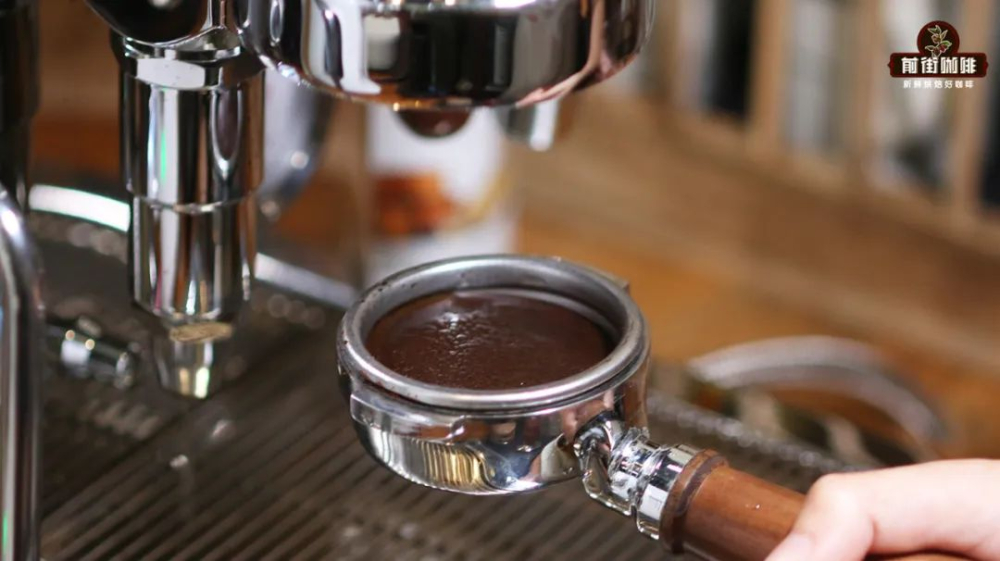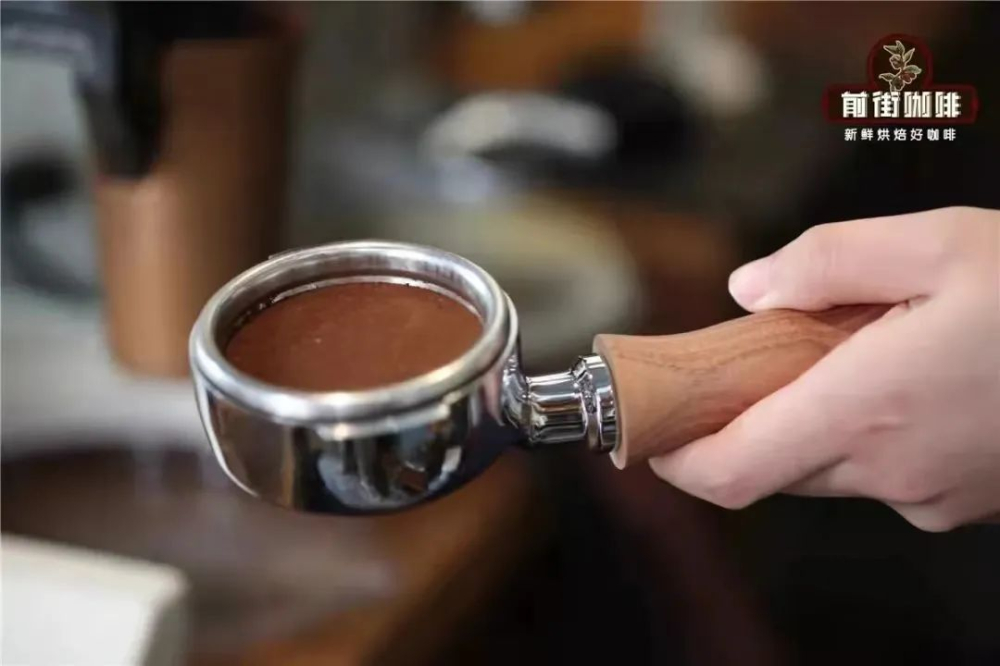What is the cause of stagnant water in the handle powder bowl after the extraction of Italian espresso machine and its solution
A friend with a toy machine asked Qianjie, "recently there was a phenomenon in the extraction of espresso. After extracting the coffee, I took out the coffee handle and found that there was stagnant water on the powder bowl. The pressed powder was not in a complete state. It was wet." Then he said, "at first I thought the coffee powder was too fine, so after adjusting the grinding degree, there was still stagnant water."
Under normal circumstances, the pressed powder after extraction of espresso should be in a relatively dry state, and the coffee pressed powder knocked out is also a relatively complete and strong piece of cake. If the coffee pressed powder shows a wet, soft state, or even stagnant water on pressed powder, then it is not a normal phenomenon and needs to find out the cause and correct it.

The coffee powder is too fine, just like the friend who asked the question, when he found that there was stagnant water, he immediately reflected that "is there something wrong with the grinding of coffee powder?" If the coffee powder is too fine, the water will pass through the powder layer more slowly, and at the end of the extraction, some of the water may not pass through the powder layer in time. Pressed powder water content is more, there will be wet muddy, serious will appear stagnant water phenomenon.

Under normal circumstances, however, it is easy to tell whether the coffee powder is too fine, because too fine coffee powder will cause the coffee liquid to flow out slowly, and the extraction time will be longer. So it's very easy to find out why. Coffee beans are not fresh, but there is one exception, that is, when the coffee beans are not very fresh, it is difficult to detect whether the coffee powder is too fine and lead to stagnant water. Most of this comes from individual players with fewer cups, and a packet of espresso beans may be used for a month at a daily concentrated consumption, during which the amount of carbon dioxide in the beans is decreasing. If the coffee beans contain carbon dioxide, in the extraction, hot water moistens pressed powder first, the coffee powder will expand to fill the gap between the particles. If there is little carbon dioxide left in the coffee bean, it will not expand, and the coffee liquid will flow out faster at the same degree of grinding. In order to make up for the lack of extraction time, the degree of grinding is normally adjusted. In this way, it is possible that the coffee powder is too fine to cause stagnant water.

-pressed powder is too far from the water distribution network in front of the street to briefly explain the extraction process of the Italian coffee machine. When the extraction key is pressed, the water column under 9bar pressure will be ejected from the head. After passing the powder water net, the water column will be divided into several water columns to evenly pressure the substance of the coffee pressed powder; when the extraction key is closed, the pressure relief valve will be opened to form a reverse pressure inside, and the excess water on the coffee pressed powder will be backsucked through the pressure relief valve. Different types of coffee powder bowls can hold different amounts of coffee powder. If there is more coffee powder, it will stick to the powder water net. If the coffee powder is less, it will be too far away from the powder water network. When the distance between the coffee powder surface and the powder water net is large, it is easy to appear that part of the water has not been absorbed back and remains in the powder bowl, forming stagnant water.

Therefore, to judge whether the amount of powder is appropriate, you can press the coffee powder tightly, and then observe whether it just reaches that concave line. If it is far away from that concave line, it means there is not enough coffee powder; if it exceeds that concave line, it means there is too much powder.

-the cause of insufficient pressure occurs more often on some household coffee machines, the pressure is not stable during extraction, the pressure can be maintained in the early stage, and the lack of pressure in the later stage leads to insufficient pressure in the final backsuction, resulting in residual water on the powder bowl.
Important Notice :
前街咖啡 FrontStreet Coffee has moved to new addredd:
FrontStreet Coffee Address: 315,Donghua East Road,GuangZhou
Tel:020 38364473
- Prev

Why does the flavor of hand-brewed coffee change with temperature? the best drinking temperature and time for hand-brewed coffee
"tasting coffee needs to go from hot to cold." I wonder if you have ever heard similar expressions. Coffee needs to be tasted at a high temperature, but don't rush to finish it. As time goes on, the coffee temperature drops slowly, and then you taste the flavor of the coffee. Is that so? As a matter of fact, such an appraiser
- Next

The method of making ice hand coffee the step parameters of water injection in the proportion of ice hand water powder to coffee grinding
In front of the street, there was a way for ice hands to make coffee in the front street. I don't know if everyone finds it difficult or not. If you find it difficult (tedious), this time Qianjie shares a super simple ice hand flushing method, which is the ice flushing version of "one throw". If you have friends who don't know what "one throw" is, you can click here.
Related
- Beginners will see the "Coffee pull flower" guide!
- What is the difference between ice blog purified milk and ordinary milk coffee?
- Why is the Philippines the largest producer of crops in Liberia?
- For coffee extraction, should the fine powder be retained?
- How does extracted espresso fill pressed powder? How much strength does it take to press the powder?
- How to make jasmine cold extract coffee? Is the jasmine + latte good?
- Will this little toy really make the coffee taste better? How does Lily Drip affect coffee extraction?
- Will the action of slapping the filter cup also affect coffee extraction?
- What's the difference between powder-to-water ratio and powder-to-liquid ratio?
- What is the Ethiopian local species? What does it have to do with Heirloom native species?

